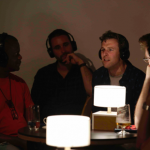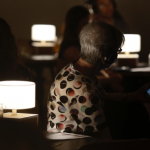Julia Samuel, ‘#WhenDeathIsShared’ in Grief Works: Stories of Life, Death and Surviving (London: Penguin, 2017)
‘Unbeknownst to their physicians, many patients prefer to “face the reaper” head-on via social media. In England, a thirty-year-old man, who worked in retail, developed a headache and difficulty walking. An MRI revealed an aggressive brain tumor. The tumor progressed despite treatment, and he lost the function of the entire right side of his body as well as the ability to speak. Bound to his hospital bed and left with only a few other avenues to communicate, he took to an iPad to blog about his experience. Distressed to be leaving behind a one-year-old son, he hoped that his son would get to know him better through this blog.’ (271)
‘Social media’s role extends past one’s last living moment. A few days after I found out that a friend of mine from school had died in a swimming accident, I was surprised to see a post from his Facebook account pop up in my newsfeed. It was a picture of him with his family, and it seemed that his sister was now posting on his behalf. Strange as it seemed, the sister, hurting with loss, would post from his account about how she saw him alive in her dreams, how she still imagined the whole thing being conjured up in her imagination. Reading these posts from my departed friend’s account would put my stomach in a lurch, juxtaposed as they were with cat videos and vacation pictures. Eventually, they made me so uncomfortable that I decided to block the posts from my newsfeed.’ (272)
‘Whatever one’s opinion of the impact digital connectivity has had on our social lives, the benefits that can potentially be derived by people facing the end of life are undeniable. More than many of the advanced medical treatments that we have developed, it is the internet that gives me hope that we might be able to ease some of the existential suffering people experience when they face their mortal end.’ (273)
‘Death, the great enemy, is now seeing many facing off with it using unusual means and on very public forums. Death cafes and death salons, where people converse about death over drinks and food, have started opening up. People like George Carlin jabbed with death jokes, once unthinkable. College courses about death are becoming increasingly popular. One can even buy a watch called a Tikker, that provides wearers a reminder of how much estimated time they have left to live. In Japan, young people can even go and have their pictures taken inside caskets, to see which one they would prefer if and when one becomes necessary. All of this forms part of what has been called the “death positive” movement, which seeks to open up death not only to those who are actually facing it, but to a younger generation who have not yet had to come to terms with their mortality.’ (277)
‘People have always talked about conquering death, and it has been assumed that death can be conquered by somehow averting it. To me, death derives its power from the deafening silence it induces whenever it enters a discussion. We would benefit from resuscitating many of the aspects of death that we have lost. Death needs to be closer to home, preceded by lesser disability and less isolation, but there is an aspect of death that we have to do away with. The deaths we die cannot be truly modern until we bring the subject of death within the pale of conversation and start having calm, educated conversations about it in classrooms, bars, restaurants, backyards, and, of course, in the clinic.’ (278)
















